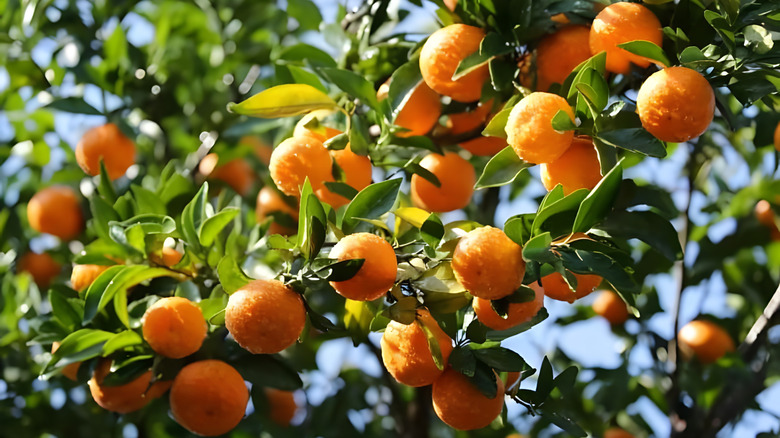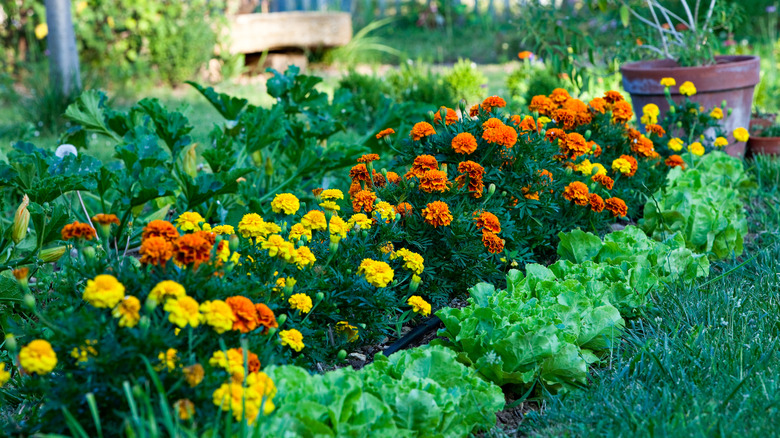The Vibrant Flowering Companion Plant That Will Help Your Citrus Trees Flourish
If you're fortunate enough to live in an area where you can grow fruit trees, you probably know how easily they can be attacked by harmful pests. In order to get the best harvest possible, it pays to understand what's eating your fruit and how to fight back. Ideally, without too many harmful pesticides. One way to do this is by growing companion plants that either attract beneficial insects (those that eat the bad ones) or that can deter the bad guys altogether. One plant that rises to this challenge is the marigold. Not only does it deter one major pest, it can attract a few other beneficial bugs to your citrus trees.
Marigolds (Tagetes spp.) are part of the aster (Asteraceae) family and have strongly scented leaves. It's long been believed that this odor is what repels pests. While this widely held belief may or may not be true, it lacks scientific evidence. Instead, it turns out the true secret weapon in this flowering herb lies in its roots, which release a toxin called alpha-terthienyl that kills certain bugs that feed on many plants, including citrus. These little garden pests, called root-knot nematodes, are microscopic worms that can cause a condition known as "slow citrus decline". If the infestation is severe enough, the citrus plant can wilt or die. When you grow marigolds, you have an effective means of biocontrol without spreading any pesticides. Not to mention, they're nice to look at!
Plant marigolds as a cover crop under your citrus trees
It turns out marigolds have a second super power that can also help fruit trees flourish. In addition to banishing nematodes before they can hatch, they also attract beneficial insects to the garden. These insects include ladybugs, wasps, hoverflies, and lacewings, which altogether eat many of the bad guy bugs such as aphids, caterpillars, moths, mites, and mealy bugs. Banishing these insects is a huge step forward in favor of a healthy fruit harvest.
Keep in mind that your marigold crop needs to have been planted for at least two months before it can have any effect on the nematode population. That's because the roots need time to grow before putting out the toxic chemical that prevents nematode eggs from hatching. You'll also have to make sure the flowers are regrown in the same location every year for them to be effective for your trees.
It's also important to select the correct marigolds for the job. Marigolds come in three main varieties, but the one that works best against nematodes is the French variety (Tagetes patula), which is pictured above. They are easily identified by their signature yellow, orange, and red hues, and can have multiple color combinations on each flower. As for attracting beneficial bugs, all marigolds can achieve this task due to their strong scent, bright colors, and long-lasting blooms. If you're just looking to attract pollinators, the choice of varietal is all yours.

